
197 posts
. , ( ). 1921 , 1996 . 1,5 , 55 35 .







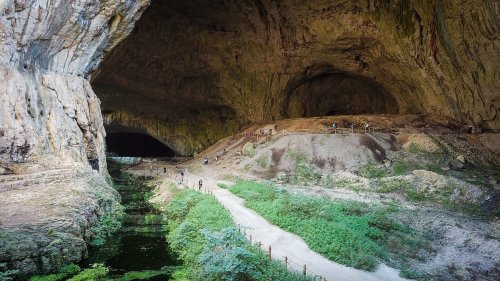















Пещера Деветашка считается одной из самых крупных в Болгарии и всей Европе. Она расположена на реке Осым, между селами Деветаки и Дойренци (Ловечская область). Пещера обнаружена лишь в 1921 году, а с 1996 года является охраняемым памятником природы. Ее протяженность составляет около 1,5 км, а входом служит гигантский проем 55 м в ширину и 35 м в высоту.
Пещера Деветашка поражает воображение туристов. Ее потолки высотой от 60 до 100 метров имеют многочисленные провалы, которые местные жители называют окнами. Они создают естественное освещение, но практически не нагревают пещеру. Поэтому здесь прохладно даже в знойные летние дни. Внутри протекает река, есть подземные озера, водопады, сталагмиты и сталактиты. В залах обитают летучие мыши, поэтому они закрыты с 1 ноября по 1 апреля, чтобы не мешать размножению животных.
В пещере обнаружены следы обитания древнего человека. Согласно археологическим исследованиям пещера служила убежищем людям с поздней палеолитической эпохи. Археологические раскопки обнаружили остатки из культурного слоя почти всех доисторических периодов. Рельефный слой толщиной от 0,3 до 5,5 м содержит остатки поселений разных эпох: палеолита(кремневые орудия мустьерских форм, позднепалеолитические изделия из кремня и костей); неолита (очаги с каменной основой, узкие каменные топоры, кремневые заточки и скребки, костяные лощила, шила и долота, керамику с резьбленными надписями); энеолита ( разрушенные жилища, печи, зернотерки,орудия из камня и костей, посуда с резной, рельефной и другой орнаментацией, антропоморфные фигуры); бронзового века (боевые топоры из бронзы, темнолощённые керамические изделия); железного века (бронзовые ножи, железное оружие).
Вторая мировая война оставила и здесь свой след. Во времена социализма пещера использовалась в качестве склада боеприпасов на случай военных действий, а также служила хранилищем нефтепродуктов. В пещере до сих пор остались следы в виде кругов с тех времен.
Немаловажной частью этого чудного места является разнообразие представителей фауны. В пещере обитают более сотни различных видов живности, некоторые из которых даже занесены в Красную книгу! В их числе 12 видов охраняемых земноводных (эскулап, полоз, тритон, древесные лягушки, черепахи Германа), около 80-ти видов птиц, 34 вида млекопитающих и 15 видов летучих мышей.
Devetashka Cave is considered one of the largest in Bulgaria and throughout Europe. It is located on the Osam River, between the villages of Devetaki and Doirentsi (Lovech region). The cave was discovered only in 1921, and since 1996 it has been a protected natural monument. Its length is about 1.5 km, and the entrance is a gigantic opening 55 m wide and 35 m high.
Devetashka Cave amazes tourists. Its ceilings range from 60 to 100 meters high and have numerous gaps, which locals call windows. They create natural light, but practically do not heat the cave. Therefore, it is cool here even on hot summer days. A river flows inside, there are underground lakes, waterfalls, stalagmites and stalactites. The halls are inhabited by bats, so they are closed from November 1 to April 1, so as not to interfere with the breeding of animals.
Traces of ancient human habitation were found in the cave. According to archaeological research, the cave has served as a shelter for people since the late Paleolithic era. Archaeological excavations have discovered remains from the cultural layer of almost all prehistoric periods. The relief layer, 0.3 to 5.5 m thick, contains the remains of settlements from different eras: Paleolithic (flint tools of Mousterian forms, Late Paleolithic objects made of flint and bones); Neolithic (hearths with a stone base, narrow stone axes, flint sharpenings and scrapers, bone polishes, awls and chisels, ceramics with carved inscriptions); Eneolithic (destroyed dwellings, ovens, grain grinders, tools made of stone and bones, dishes with carved, relief and other ornamentation, anthropomorphic figures); Bronze Age (battle axes made of bronze, dark-polished ceramics); Iron Age (bronze knives, iron weapons).
The Second World War left its mark here too. During socialism, the cave was used as an ammunition depot in case of hostilities, and also served as a storage facility for petroleum products. There are still traces in the cave in the form of circles from those times.
An important part of this wonderful place is the diversity of fauna. The cave is home to more than a hundred different species of living creatures, some of which are even listed in the Red Book! These include 12 species of protected amphibians (aesculapius, snake, newt, tree frogs, Hermann's tortoises), about 80 species of birds, 34 species of mammals and 15 species of bats.
Источник:/bulgariaexpert.ru/info/peschera-devetashka.php, /www. ntabulgaria.ru/blog/interesnye-mesta/peshhera-devetashka/, juicyworld.org/devetashka-cave/,/volimo-balkan.livejournal .com /450004.html,//meteo.by/around/c288c52491142c32.html, //www. tripadvisor.ru/Attraction_Review-g14037230-d4184576-Reviews-Devetashka_Cave-Devetaki_Lovech_Province.html,/bolgarskiydom .com/devetashka/.
-
 gina025 liked this · 9 months ago
gina025 liked this · 9 months ago -
 how-we-kiss-and-kill-each-other liked this · 9 months ago
how-we-kiss-and-kill-each-other liked this · 9 months ago -
 relatospropios liked this · 9 months ago
relatospropios liked this · 9 months ago -
 dream-world-universe liked this · 9 months ago
dream-world-universe liked this · 9 months ago -
 theunknowninside liked this · 9 months ago
theunknowninside liked this · 9 months ago -
 sanoups liked this · 9 months ago
sanoups liked this · 9 months ago -
 assman57 liked this · 9 months ago
assman57 liked this · 9 months ago -
 fairryywiittchdaddyy liked this · 9 months ago
fairryywiittchdaddyy liked this · 9 months ago -
 thenomaddownunder reblogged this · 9 months ago
thenomaddownunder reblogged this · 9 months ago -
 01012180630 liked this · 9 months ago
01012180630 liked this · 9 months ago -
 7melodramatic7 reblogged this · 9 months ago
7melodramatic7 reblogged this · 9 months ago -
 7melodramatic7 liked this · 9 months ago
7melodramatic7 liked this · 9 months ago -
 omgindiablog liked this · 9 months ago
omgindiablog liked this · 9 months ago -
 owoseverywhere liked this · 9 months ago
owoseverywhere liked this · 9 months ago -
 vivelafranceblog liked this · 9 months ago
vivelafranceblog liked this · 9 months ago -
 whiteboard-fanatics liked this · 9 months ago
whiteboard-fanatics liked this · 9 months ago -
 l-0-ne-w-0-lf liked this · 9 months ago
l-0-ne-w-0-lf liked this · 9 months ago -
 angelayasmim liked this · 9 months ago
angelayasmim liked this · 9 months ago -
 celestialcherubicangel liked this · 10 months ago
celestialcherubicangel liked this · 10 months ago -
 bayleafs-corner reblogged this · 10 months ago
bayleafs-corner reblogged this · 10 months ago -
 hopefulladydream liked this · 10 months ago
hopefulladydream liked this · 10 months ago -
 kohamarsonist liked this · 10 months ago
kohamarsonist liked this · 10 months ago -
 schmitty39 liked this · 10 months ago
schmitty39 liked this · 10 months ago -
 rusilver reblogged this · 10 months ago
rusilver reblogged this · 10 months ago -
 hcr-den liked this · 10 months ago
hcr-den liked this · 10 months ago -
 spayki liked this · 10 months ago
spayki liked this · 10 months ago -
 angel-oriel liked this · 10 months ago
angel-oriel liked this · 10 months ago -
 iamblessedtruly liked this · 10 months ago
iamblessedtruly liked this · 10 months ago -
 seelensblog liked this · 10 months ago
seelensblog liked this · 10 months ago -
 scooby-doo-exploration liked this · 10 months ago
scooby-doo-exploration liked this · 10 months ago -
 pacogabby liked this · 10 months ago
pacogabby liked this · 10 months ago -
 massivebonkbanditpickle liked this · 10 months ago
massivebonkbanditpickle liked this · 10 months ago -
 massivebonkbanditpickle reblogged this · 10 months ago
massivebonkbanditpickle reblogged this · 10 months ago -
 northameicanblog liked this · 10 months ago
northameicanblog liked this · 10 months ago -
 kerovousphoto liked this · 10 months ago
kerovousphoto liked this · 10 months ago -
 piperi-gemista reblogged this · 10 months ago
piperi-gemista reblogged this · 10 months ago -
 piperi-gemista liked this · 10 months ago
piperi-gemista liked this · 10 months ago -
 mohamedbenjamaa liked this · 10 months ago
mohamedbenjamaa liked this · 10 months ago -
 emt069 liked this · 10 months ago
emt069 liked this · 10 months ago -
 igor07 liked this · 10 months ago
igor07 liked this · 10 months ago -
 ludmila199 liked this · 10 months ago
ludmila199 liked this · 10 months ago -
 elektrathe100 liked this · 10 months ago
elektrathe100 liked this · 10 months ago -
 soerenlovesginger reblogged this · 10 months ago
soerenlovesginger reblogged this · 10 months ago -
 soerenlovesginger liked this · 10 months ago
soerenlovesginger liked this · 10 months ago -
 pilottttt liked this · 10 months ago
pilottttt liked this · 10 months ago
More Posts from Vestaignis



























Озеро Сукко (Кипарисовое озеро), или Голубое озеро — одна из самых популярных и фотогеничных локаций в окрестностях Анапы. Удивительные деревья с узловатыми корнями и приятным смолистым ароматом растут здесь прямо из воды. О происхождении названия озера существует множество предположений. С адыгейского топоним можно перевести как «водоем кабанов». Существует также вариант трактовки «Сукко» как «су» — вода и «къко» – свинья или дельфин. Озеро в Сукко было создано искусственно путем строительства плотины на реке, впадающей в Черное море, что привело к затоплению долины. Этот водоем занимает площадь всего 8 гектаров. Высота Кипарисового озера - 40 м над уровнем моря. Особую известность озеру принес уникальный эксперимент, проведенный в 1934–1935 годах, когда были посажены 32 болотных кипарисов, которые успешно прижились и выросли. Изначально кипарисы были посажены на сухой земле, однако из-за значительных изменений рельефа территории они со временем оказались в воде. В периоды засухи уровень воды в озере понижается, обнажая обширную корневую систему деревьев. Кипарисы достигают внушительной высоты почти в 30 метров, а их стволы могут быть шириной до полуметра. Роща прекрасна практически в любой сезон: весной свежая листва хвойных деревьев нежно-зелёная, летом приобретает более тёмный и насыщенный оттенок, а осенью полыхает ярко-оранжевым или красным цветом. К зиме деревья полностью сбрасывают листву, обнажая ветвистые кроны — в чём тоже есть своя красота.
Из-за обилия известняковых отложений в зависимости от освещения озеро Сукко может менять цвет от нежного молочно-голубого до насыщенного бирюзового. Голубое озеро не только известно своими кипарисами и кристально чистой водой, но и окружающей его природой. Водоем находится среди лесопарка с дубами и грабами, а с северной стороны его окружают склоны горы Широкая. Рядом также расположена можжевеловая роща, создающая лечебный воздух в этой местности.
Lake Sukko (Cypress Lake), or Blue Lake, is one of the most popular and photogenic locations in the vicinity of Anapa. Amazing trees with knotty roots and a pleasant resinous aroma grow here directly from the water. There are many speculations about the origin of the name of the lake. From the Adyghe toponym can be translated as “pond of wild boars.” There is also an option to interpret “Sukko” as “su” - water and “kko” - pig or dolphin. The lake in Sukko was created artificially by building a dam on a river flowing into the Black Sea, which led to flooding of the valley. This reservoir covers an area of only 8 hectares. The height of Cypress Lake is 40 m above sea level. The lake became especially famous due to a unique experiment conducted in 1934–1935, when 32 swamp cypress trees were planted, which successfully took root and grew.Initially, the cypress trees were planted on dry land, but due to significant changes in the terrain, they eventually ended up in water. During periods of drought, the lake's water level drops, exposing the trees' extensive root systems. Cypress trees reach an impressive height of almost 30 meters, and their trunks can be up to half a meter wide. The grove is beautiful in almost any season: in the spring, the fresh foliage of coniferous trees is soft green, in the summer it acquires a darker and richer shade, and in the fall it blazes with bright orange or red. By winter, the trees completely shed their leaves, revealing branched crowns - which also has its own beauty.
Due to the abundance of limestone deposits, depending on the lighting, Lake Sukko can change color from delicate milky blue to rich turquoise. Blue Lake is not only famous for its cypress trees and crystal clear water, but also for the nature that surrounds it. The reservoir is located among a forest park with oaks and hornbeams, and on the northern side it is surrounded by the slopes of Mount Shirokaya. There is also a juniper grove nearby, which creates healing air in this area.
Источник: https://kukarta.ru/ozero-sukko,//ezhevika-travel.ru /tur/ozero-sukko-foto,/turistexpert.ru/rossiya/anapa/kiparisovoe-ozero/,//kiparisovoe-ozero.ru,/blijehotel.ru/articles/kiparisovoe-ozero/, /experience.tripster.ru/sights/kiparisovoe-ozero-sukko/, /www.tripadvisor.ru/Attraction_Review-g3226223-d2331079-Reviews-Sukko_Lake-Sukko_Krasnodar_Krai_Southern_District.html.





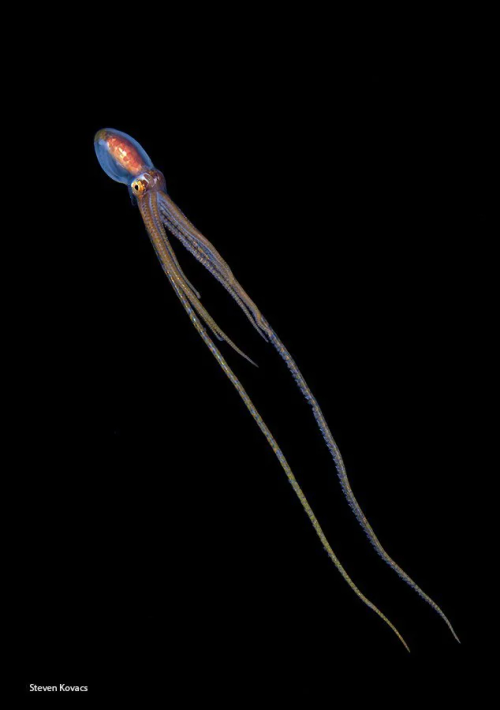







Macrotritopus defilippi, широко известный как длиннорукий осьминог-лилипут или атлантический длиннорукий осьминог, является небольшим видом осьминогов, морских головоногих моллюсков отряда Octopoda.
Macrotritopus defilippi - это небольшой осьминог с относительно длинными руками и мантией длиной до 90 мм (3,5 дюйма). Как и у большинства осьминогов, цвет кожи может варьироваться. Обычно он либо однотонный, либо в крапинку и полностью соответствует цвету окружающей местности, песчаных равнин, на которых он обитает. Там, где субстрат содержит гравий или песок, крапчатый рисунок часто крупнее, на коже могут быть небольшие сосочки (мясистые выпуклости), а на руках - светлые и темные полосы. Этот осьминог также может зарываться в субстрат, не оставляя никаких визуальных следов своего местонахождения.
Личинки Macrotritopus defilippi плавают с вытянутыми лапками и, если их потревожить, взлетают с помощью реактивного двигателя, иногда достигая морского дна и ища нору, в которой можно спрятаться. Ночью они могут вести пелагический образ жизни, а днем - бентический, но, по-видимому, с возрастом становятся менее ночными. Когда взрослая особь осьминога передвигается, то делает это таким образом, что его поведение при плавании очень напоминает поведение донных камбал, обитающих в тех же водах.
Macrotritopus defilippi был обнаружен в Атлантическом океане, включая Карибское море, Средиземное море, северную часть Индийского океана и побережье Сомали.
Macrotritopus defilippi, commonly known as the long-armed midget octopus or Atlantic long-armed octopus, is a small species of octopus, marine cephalopods of the order Octopoda.
Macrotritopus defilippi is a small octopus with relatively long arms and a mantle up to 90 mm (3.5 in) long. As with most octopuses, skin color can vary. It is usually either monophonic or speckled and fully corresponds to the color of the surrounding area, the sandy plains on which it lives. Where the substrate contains gravel or sand, the speckled pattern is often larger, there may be small papillae (fleshy bulges) on the skin, and light and dark stripes on the hands. This octopus can also burrow into the substrate without leaving any visual traces of its location.
Macrotritopus defilippi larvae swim with their legs outstretched and, if disturbed, take off using a jet engine, sometimes reaching the seabed and looking for a hole in which to hide. They can lead a pelagic lifestyle at night and a benthic lifestyle during the day, but apparently they become less nocturnal with age. When an adult octopus moves, it does so in such a way that its swimming behavior is very similar to that of bottom flounders living in the same waters.
Macrotritopus defilippi has been found in the Atlantic Ocean, including the Caribbean Sea, the Mediterranean Sea, the northern Indian Ocean and the coast of Somalia.
Источник://t.me/+E4YBiErj0A8wOGUy,//news.miami.edu/stories/2019/06/winners-announced-in-rosenstiel-school-underwater-photo-contest.html,//ru.pinterest.com/pin/632966922633183935/,/octonation.com/octopedia/atlantic-longarm-octopus/,//pofoto.club/17356-glubokovodnyj-osminog-57-foto.html, //en.wikipedia.org/ wiki/ Macrotritopus_defilippi.




















Каинды - 400 метровое озеро в Казахстане, в долине Тянь-Шаня, в 129 км от города Алматы. Оно расположено среди хвойного леса на высоте 1667 метров над уровнем моря. Озеро Каинды образовалось после землетрясения 1911 года, которое вызвало большой оползень, заблокировавший одно из ущелий горного хребта Кунгей Алатау, образовав естественную плотину. Впоследствии, дождевая вода заполнила долину и наполнила озеро.
Озеро славится своей красотой подводного леса. Макушки самых высоких деревьев поднимаются прямо из воды. Средняя глубина составляет 20 метров, а в некоторых местах доходит до 30 метров. Вода в озере настолько холодная (даже летом температура воды не превышает 6 градусов), что могучие сосны по-прежнему остаются полузамороженными на своих местах, даже 100 лет спустя. Благодаря чистой горной воде, можно увидеть глубины озера. Вода в озере пресная, практически не содержит растворенных солей и идентична той воде, которая подвергается многоуровневой очистке в лаборатории.Зимой поверхность озера замерзает и становится прекрасным местом для ловли форели и подлёдного дайвинга.
Этот природный объект внесён в список особо охраняемых природных территорий со статусом природоохранного и научного учреждения, а также входит в Государственный национальный природный парк "Кольсайские озёра".
Kaindy is a 400-meter lake in Kazakhstan, in the Tien Shan Valley, 129 km from the city of Almaty. It is located among a coniferous forest at an altitude of 1667 meters above sea level. Kaindy Lake was formed after the earthquake of 1911, which caused a large landslide that blocked one of the gorges of the Kungei Alatau mountain range, forming a natural dam. Subsequently, rainwater filled the valley and filled the lake.
The lake is famous for its underwater forest beauty. The tops of the tallest trees rise straight out of the water. The average depth is 20 meters, and in some places it reaches up to 30 meters. The water in the lake is so cold (even in summer the water temperature does not exceed 6 degrees) that the mighty pines still remain semi-frozen in their places, even 100 years later. Thanks to the clear mountain water, you can see the depths of the lake. The water in the lake is fresh, contains practically no dissolved salts and is identical to the water that is subjected to multi-level purification in the laboratory.In winter, the surface of the lake freezes and becomes a great place for trout fishing and ice diving.
This natural object is included in the list of specially protected natural territories with the status of an environmental and scientific institution, and is also included in the Kolsai Lakes State National Natural Park.
Источник://discoverynn.ru/blog/kazakhstan/ozero-kaindy-neobychnaya-dostoprimechatelnost-na-yuge-kazakhstana/ , ://newtimes.kz/obshchestvo/155196-podvodnyj-les-ozera-kaindy-udivil-kazahstancev,//tourlenta.com/blog/316-podvodnij-les-na-ozere-kaindi,m.vk.com/wall-222521402_9950,//www.stena.ee /blog /zatoplennyj-les-odno-iz-samyh-krasivyh-mest-kazahstana,//dzen.ru /a/ZOZQ8LxcWxUAPkQe,aveneerdmc.com/ru/inspiration/kaindy.
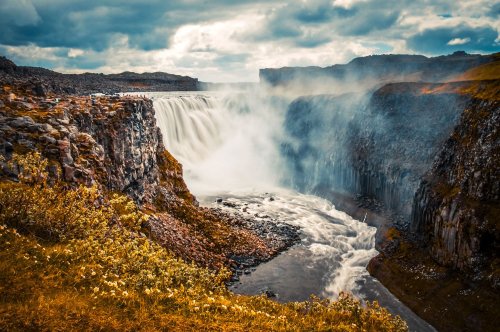










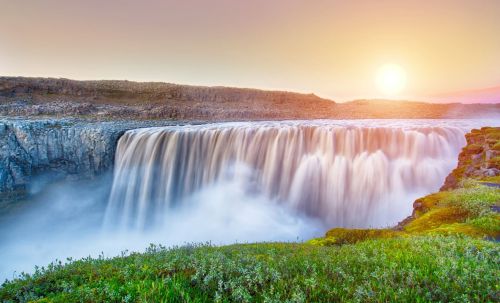
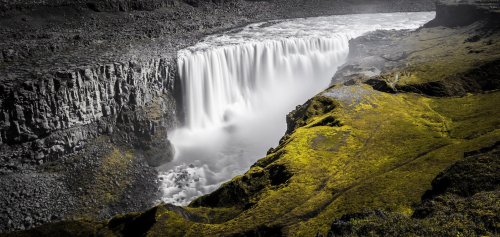



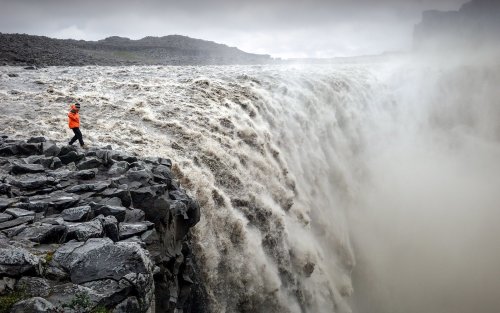





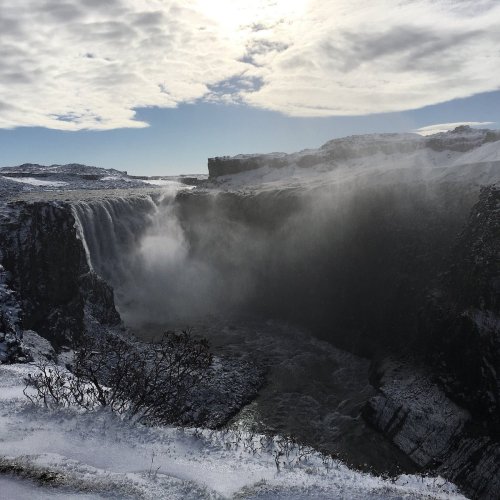

Деттифосс самый мощный водопад Исландии и Европы, его называют «европейской Ниагарой».При ширине около 100 метров этот водопад низвергается с высоты в 44 метра. Во время паводков количество воды в водопаде может вырости в 3-4 раза и в пиковые моменты составляет до 600 м3/секунду! Кстати, в переводе с исландского Деттифосс значит Бурлящий водопад, гул его слышен на многие мили вокруг.
Водопад находится в северо-восточной части острова, в Национальном парке Исландии Йёкульсаурглювур и расположенн на крупной реке Йёкюльсау-ау-Фьёдлюм. Ледниковое питание реки Йёкюльсау-ау-Фьёдлюм обуславливает не совсем обычный для исландских рек буро-коричневый цвет воды, срывающейся с уступов Деттифосс. Путь к живописному творению природы лежит сквозь пустынную местность, покрытую множеством дюн черного песка.Единственным исключением является зеленый оазис на склоне холма на западном берегу, куда попадают брызги от водопада, увлажняя почву. Однако на восточном берегу совершенно иная картина. При определенном направлении ветра вы можете промокнуть до нитки от брызг. Из-за густого облака брызг дно водопада не просматривается, однако хорошо видны потрясающие базальтовые колонны, которые встречаются на всем пути с обеих сторон реки.
Однако не только своей мощью и суровой красотой известен водопад Деттифосс, но и своим участием в кинематографе - именно этот водопад "сыграл" роль в фильме Ридли Скотта "Прометей". По версии Скотта именно тут зародилась жизнь на Земле.
Dettifoss is the most powerful waterfall in Iceland and Europe, it is called the “European Niagara”. With a width of about 100 meters, this waterfall falls from a height of 44 meters. During floods, the amount of water in the waterfall can increase 3-4 times and at peak moments it reaches up to 600 m3/second! By the way, in Icelandic Dettifoss means Raging Waterfall; its roar can be heard for many miles around.
The waterfall is located in the northeastern part of the island, in the Jökulsárglúvur National Park of Iceland and is located on the large river Jökulsau au Fjödlum. The glacial feeding of the Jökulsau au Fjödlum River causes the brown-brown color of the water falling from the Dettifoss ledges, which is unusual for Icelandic rivers. The path to the picturesque creation of nature lies through a desert area covered with many dunes of black sand. The only exception is a green oasis on the hillside on the western shore, where spray from a waterfall falls, moistening the soil. However, on the eastern shore the picture is completely different. In certain wind directions, you can get wet to the skin from the spray. Due to the thick cloud of spray, the bottom of the waterfall is not visible, but the stunning basalt columns that occur along the entire path on both sides of the river are clearly visible.
However, the Dettifoss waterfall is known not only for its power and harsh beauty, but also for its participation in cinema - it was this waterfall that “played” a role in Ridley Scott’s film “Prometheus”. According to Scott, this is where life on Earth originated.
Источник://t.me/roundtravel,/scandica.ru/iceland/sights1/vodopad_dettifoss_dettifoss/,//www.andreev.org/travel-photos/iceland-dettifoss . html,//www.tripadvisor.ru/Attraction_Review-g315845-d1912449-Reviews-Dettifoss_Waterfall-Lake_Myvatn_Northeast_Region.html, /scandica.ru/iceland/sights1/vodopad_dettifoss_dettifoss/,/vislandii.com/attractions/waterfall/100-dettifoss waterfall, //www.vodopads.ru / blog /vodopad_dettifoss_dettifoss/2012-10-26-33, //www.equatorial . by/content/vodopad-dettifoss-dettifoss,/priroda.club/vodopady/8358-vodopad-dettifoss-islandija-56-foto.html.


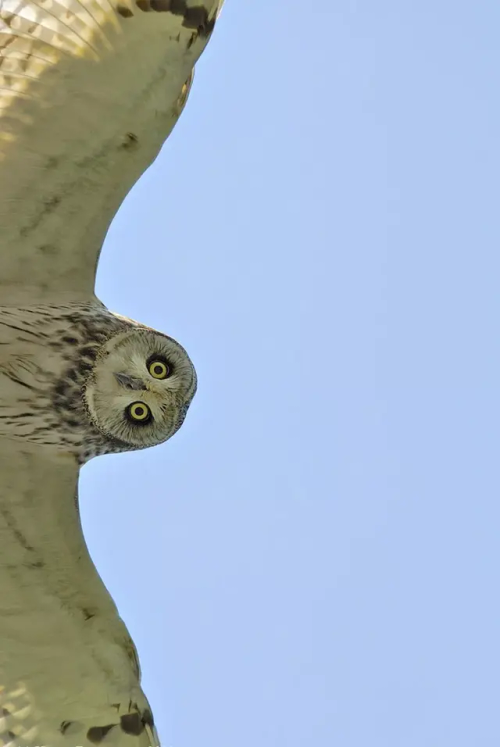
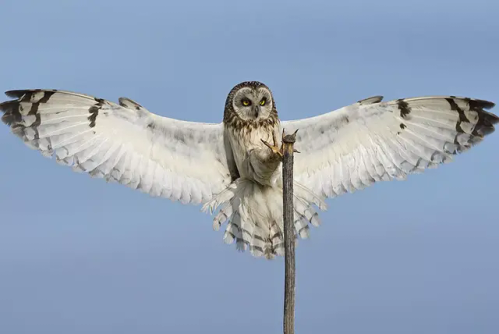


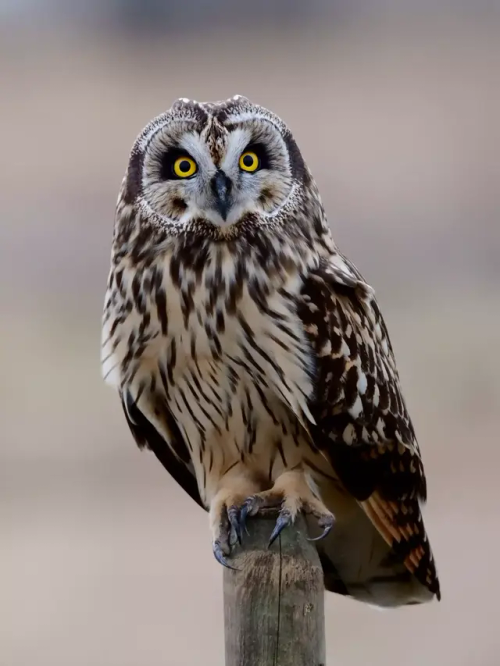



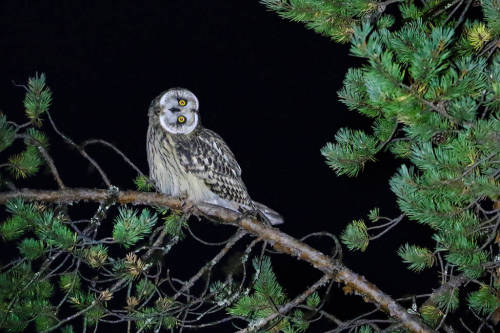











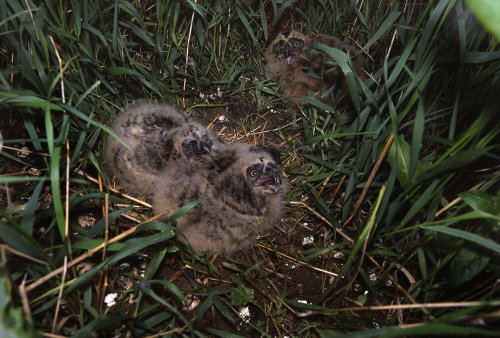


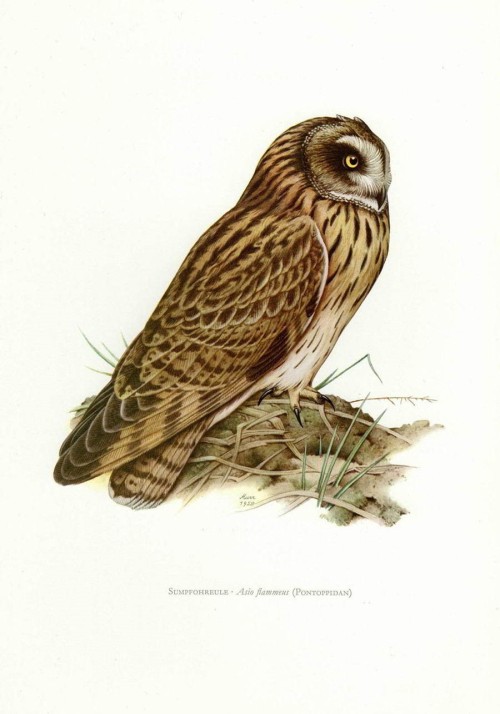
Болотная сова (Asio flammeus) – среднего размера сова: длина ее тела колеблется от 34 до 42 см, вес самцов - 0,23-0,39 кг, самок - 0,24-0,43 кг. Крылья у нее длинные, ноги украшены пучками из перьев, на голове расположены маленькие вертикально стоящие "ушки" из перьев.
Болотная сова распространена очень широко, она обитает на всех континентах, кроме Австралии и Антарктики и населяет соленоводные болота, прибрежные равнины, хвойные леса, тундру, трясины, поля, прерии, высокотравные степи (часто с солончаками), луга (в поймах рек и озер), гористые местности и субальпийские луга, сельскохозяйственные угодья и парковые насаждения. Во всех местах обитания болотная сова придерживается открытых пространств.
Большую часть рациона этой птицы составляют мелкие грызуны (мыши, полёвки, лемминги, крысы, хомяки и ондатры), кролики, землеройки, летучие мыши, птицы (кулики, крачки, мелкие чайки, жаворонки и дрозды), насекомые (кузнечики, жуки, гусеницы) и иногда рыба.
Охотится болотная сова в любое время суток, низко паря над открытым пространством. На добычу она обычно нападает с полета или из засады и несёт ее в когтях. Болотные совы – моногамы и образуют постоянные пары. Самец привлекает самку на свой участок красивыми пируэтами в воздухе. Иногда в брачных полетах участвуют обе птицы: они гоняются друг за другом, сцепляются когтями или в шутку борются. Гнездом обычно служит расчищенная самкой ямка диаметром до 40 см на вершине плоской кочки среди густой травы или тростника. В кладке 4–7 яиц, которые насиживает самка.
Swamp Owl (Asio flammeus) – medium-sized owl: its body length ranges from 34 to 42 cm, the weight of males is 0.23-0.39 kg, females - 0.24-0.43 kg. Her wings are long, her legs are decorated with tufts of feathers, and small vertically standing "ears" of feathers are located on her head.
The is very widespread, it lives on all continents except Australia and Antarctica and inhabits saltwater swamps, coastal plains, coniferous forests, tundra, bogs, fields, prairies, tall grass steppes (often with salt marshes), meadows (in floodplains of rivers and lakes), mountainous areas and subalpine meadows, agricultural lands and parkland. In all habitats, the swamp owl adheres to open spaces.
Most of the diet of this bird consists of small rodents (mice, voles, lemmings, rats, hamsters and muskrats), rabbits, shrews, bats, birds (sandpipers, terns, small gulls, larks and thrushes), insects (grasshoppers, beetles, caterpillars) and sometimes fish.
The swamp owl hunts at any time of the day, hovering low over an open space. It usually attacks prey from flight or from ambush and carries it in its claws. Swamp owls are monogamous and form permanent pairs. The male attracts the female to his site with beautiful pirouettes in the air. Sometimes both birds participate in mating flights: they chase each other, lock claws or jokingly fight. The nest is usually a hole cleared by a female with a diameter of up to 40 cm on top of a flat hummock among dense grass or reeds. There are 4-7 eggs in the clutch, which are incubated by the female.
Источник://www.ebirds.ru/vid/225.htm,/bigenc.ru/c/bolotnaia-sova-bb9577,/zoogalaktika.ru/photos/aves/strigiformes/asio-flammeus, //www.mos.ru/news/item/86280073/,://ecology.polotsk.museum.by/node/42982,/russia.birding.day/v2taxon.php?s=423&l=ru.